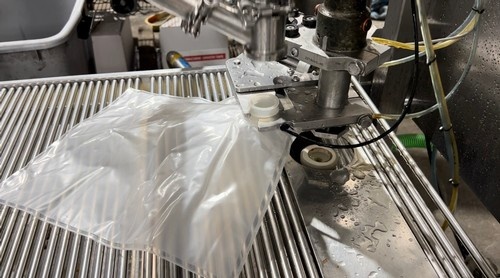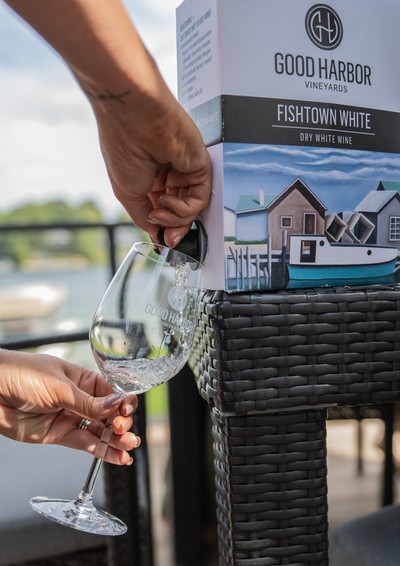Looking Into The Plastic Predicament in Boxed Wine
Looking Into The Plastic Predicament in Boxed Wine
 In recent years, the wine industry has witnessed a significant shift toward more sustainable and eco-friendly packaging. As wine enthusiasts and environmentalists alike seek ways to reduce their carbon footprint and minimize single-use plastics, boxed wine is often touted as a greener alternative to traditional glass bottles, there’s a hidden aspect of this packaging that deserves our attention: the plastic. This blog will delve into the world of boxed wine and its often-overlooked plastic components, shedding light on the environmental impact and potential solutions for a more eco-conscious wine consumption.
In recent years, the wine industry has witnessed a significant shift toward more sustainable and eco-friendly packaging. As wine enthusiasts and environmentalists alike seek ways to reduce their carbon footprint and minimize single-use plastics, boxed wine is often touted as a greener alternative to traditional glass bottles, there’s a hidden aspect of this packaging that deserves our attention: the plastic. This blog will delve into the world of boxed wine and its often-overlooked plastic components, shedding light on the environmental impact and potential solutions for a more eco-conscious wine consumption.
So, open a box of Fishtown White, pour yourself a glass and join us on a journey to unbox the complex relationship between wine and plastic, and discover how you can make more informed choices for a sustainable sipping experience.
Before we get into the specifics of the material used to make the plastic bag that holds the wine, we need to look a little deeper into the history of it. The concept of wine being put into a plastic bag and ‘wine cask’ was started by Australian winemaker Thomas Angove in the 1960s with it being patented in 1965. At the beginning, Angove used a one gallon polyethylene bladder that was put into corrugated boxes in order to sell it to consumers. Originally, the design required the consumer to cut the corner of the bag, or bladder, inside the box, pour out the desired amount, and then reseal it with a special peg.
The Bag Itself
One of the concerns consumers have when it comes to purchasing or consuming boxed wine is: Is the plastic used to store the wine safe? According to researchers, the answer is “it depends.” Some of the plastic used in the boxes can contain BPA, or Bisphenol-A. BPA is a synthetic chemical used to make plastics and epoxy resins. It can be found in anything from water bottles to takeout containers to cash-register receipts. Since the 1960s, it has been approved by the FDA to be used in products containing food.
But, one of the largest wine box manufacturers, Scholle Packaging, only uses BPA-free #7 plastic in their bags, according to an article written by Scientific American. Scholle Packaging invented the first commercial bag-in-box system in 1955 while looking for a safe way to transport and dispense battery acid.
Big names in the boxed wine world - Perini, Campo Largo, and Bota Box - used BPA-free packaging. The easiest way to determine if the bag used in the boxed wine you are purchasing contains BPA is to read the labels when shopping.
The bags used in the Fishtown White Box product at Good Harbor Vineyards are produced by Scholle Manufacturing which means they are 100% BPA-free.
Components
Bag-in-box consists of a double welded plastic bag placed inside a cardboard box for easy storage. While the types of plastics used in these bags can vary from brand to brand, there are two common materials used. The outer bag is typically made with a plastic laminate plus PET while the inner bag is commonly made with a low density polyethylene or ethylene vinyl acetate.
 Shift in Perception
Shift in Perception
For quite some time, it was believed that only “cheap wine” was put into boxes - in the United States that is. Obviously, as people started worrying about their carbon footprint a little more, and they were looking for a more economical way to enjoy wine, the popularity for bag-in-box wines increased. According to a recent article by Eric Asimov, New York Times wine critic, more and more producers and merchants are opting to box quality wine that is intended for daily consumption due to ecological advantages.
One of the ecological benefits that Asimov mentions is how long the wine can last. Typically, once a bottle of wine is opened, the product will only stay fresh for a day or two - sometimes up to a week. In a box, the wine can stay fresh up to a month or so once opened. This is due to the fact that the plastic liner shrinks around the remaining wine preventing extra, unwanted air from getting into the product, which can age the wine.
The world of wine is evolving, and so too are the containers that hold it. Boxed wine, with its innovative use of plastic packaging, has become an increasingly popular and eco-conscious choice for wine enthusiasts. We’ve explored the benefits and drawbacks of plastic in boxed wine, from its environmental advantages to its preservation of wine quality. While plastic has faced its fair share of scrutiny, it’s clear that when used responsibly and sustainably, it can be a valuable tool in reducing waste and carbon footprint. As consumers become more aware of the environmental impact of their choices, boxed wine, with its plastic packaging, represents a step forward in the world of wine, offering both convenience and eco-friendliness.
So, whether you’re a wine connoisseur or a casual wine lover, don’t underestimate the positive role that plastic can play in the ever-evolving wine industry. Cheers to a greener, more sustainable way to enjoy your favorite vintages.
Comments
Commenting has been turned off.Recent Posts
-
August 21, 2025
-
August 9, 2025
-
July 1, 2025
-
June 3, 2025
-
May 2, 2025
-
April 9, 2025
-
March 6, 2025
-
February 11, 2025
-
January 10, 2025
-
December 12, 2024